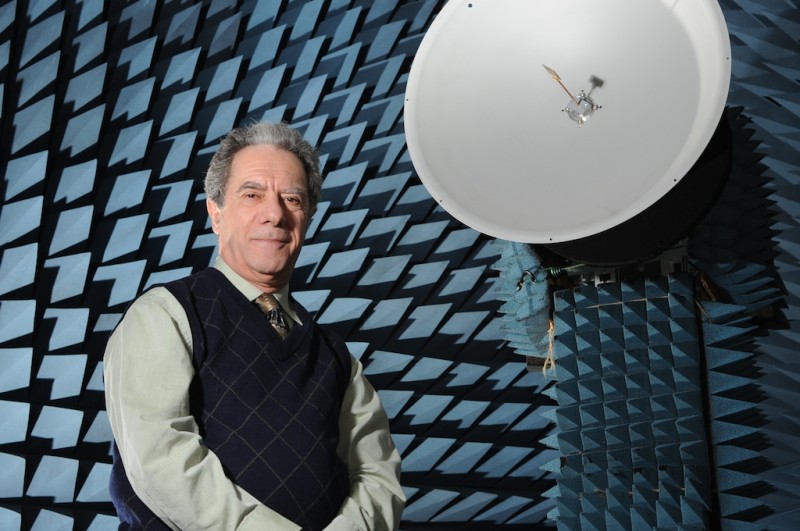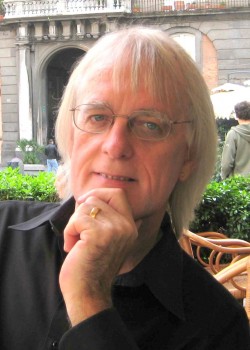
Looking back at our last Killam Prize winners
In 2011 Lotfallah Shafai, Canada Research Chair in Applied Electromagnetics, won a Killam Prize in Engineering for his work, which, if you’re reading this on a mobile phone, you can thank him for. In 2008, Distinguished Professor Frank Hawthorne won the Killam Prize in Natural Sciences for his work examining what controls the arrangements of atoms in minerals and how these arrangements determine how these minerals will behave in Earth processes. This is crucial knowledge to have if we want to dispose of nuclear waste. And our first winner was in 1985: Ralph G. Stanton from the department of mathematics won the Killam Price in Natural Sciences
As we celebrate our most recent Killam Prize, won by Dr. Frank Plummer, we want to briefly reflect upon our other recent successes.
Can you hear me now?
When television journalists broadcast live from war zones or inside hurricanes, many use satellite-phone systems with compact antennas to send live images and reports back to the news desk. This technology was developed by Lotfallah Shafai, Canada Research Chair in Applied Electromagnetics. His wave-breaking technologies have made Canada a world leader in the research and development of communications technology and remote sensing.
In recognition of these accomplishments, Shafai was chosen to receive the 2011 Killam Prize in Engineering.
The Killam Program offers five awards every year to outstanding Canadian scholars working in the humanities, social sciences, natural sciences, health sciences and engineering. The $100,000 Killam prize is among Canada’s most distinguished research awards. Recipients are chosen by a committee of 15 eminent Canadian scholars appointed by the Canada Council.
Technologies that have benefitted from Shafai’s research include not only wireless and satellite communications but also remote sensing, radar metrology, radio astronomy, medical diagnostics and most recently, electromagnetic mapping of Arctic sea ice. He has furthered the science of antenna engineering by viewing antennas as electromagnetic devices. His early accomplishments included miniaturizing satellite ground terminals: reducing them from several metres in size to less than a meter. His sixty-centimeter ground station terminal design was used for the Canadian Hermes satellite in the late 70s.
In addition to the Killam Prize, Shafai has received more than 34 other awards and honours throughout his career. He has published over 750 papers, written 93 research reports and holds 13 patents.
He was the third Killam Prize recipient to hail from the University of Manitoba. In 2008, Frank Hawthorne received the Killam Prize in Natural Sciences for his research on crystal structures and the crystal chemistry of complex minerals, leading to advances in environmental mineralogy and the disposal of high-level wastes. And in 1985 Ralph G. Stanton, mathematics, received a Killam Prize in Natural Sciences.
Frank Hawthorne, exploring crystals
Distinguished Professor Frank C. Hawthorne won the 2008 Killam Prize in Natural Sciences. Hawthorne, a Canada Research Chair in Crystallography and Mineralogy and professor in the department of geological sciences, is one of the world’s foremost earth scientists. He has devoted his career to bringing an arsenal of experimental and theoretical techniques to bear on what were previously intractable problems in he areas of mineralogy, crystallography and geochemistry.
Hawthorne’s work on quantitatively predicted mineral stability as a function of chemical bonding at the atomic level has advanced mineralogy beyond traditional descriptive methods. His goal – to combine chemical theory and mathematics with new and innovative ways of understanding minerals – has led to groundbreaking research on crystal structures and crystal chemistry of complex minerals, as well as to advances in a number of topical areas, including environmental mineralogy (for example, the disposal of high-level wastes).
He has so far published over 600 refereed papers in scientific journals and 30 chapters in books. He was listed by Thomson Scientific as the most cited Geoscientist in the world for 1997-2006. Between 1990 and 2000, Sciencewatch listed him as the most cited Mineralogist/Crystallographer and the third most cited Solid-Earth Scientist. He is an Officer in the Order of Canada, a Fellow of the Royal Society of Canada, and a Foreign Member of the Russian Academy of Sciences. Throughout his career has garnered him numerous awards and honours, most recently the Roebling Medal, the highest award of the Mineralogical Society of America.
Ralph Stanton
Ralph G. Stanton (1923-2010), was a teacher, scholar and pioneer in mathematics and computing education. In 1985 he won the Killam Prize in Natural Sciences.
He was educated at the University of Western Ontario and then at the University of Toronto, where he taught from 1946 to 1957. In 1957 he went to the University of Waterloo as its first mathematics professor and head of the Mathematics Department and then in 1967 he left Waterloo for York University to start a graduate program in mathematics. In 1970 he moved to the Department of Computing Science at the University of Manitoba, serving as Head, Professor, and in 1984, as Distinguished Professor.
The Killam Prizes are administered by the Canada Council for the Arts.
Research at the University of Manitoba is partially supported by funding from the Government of Canada Research Support Fund.








